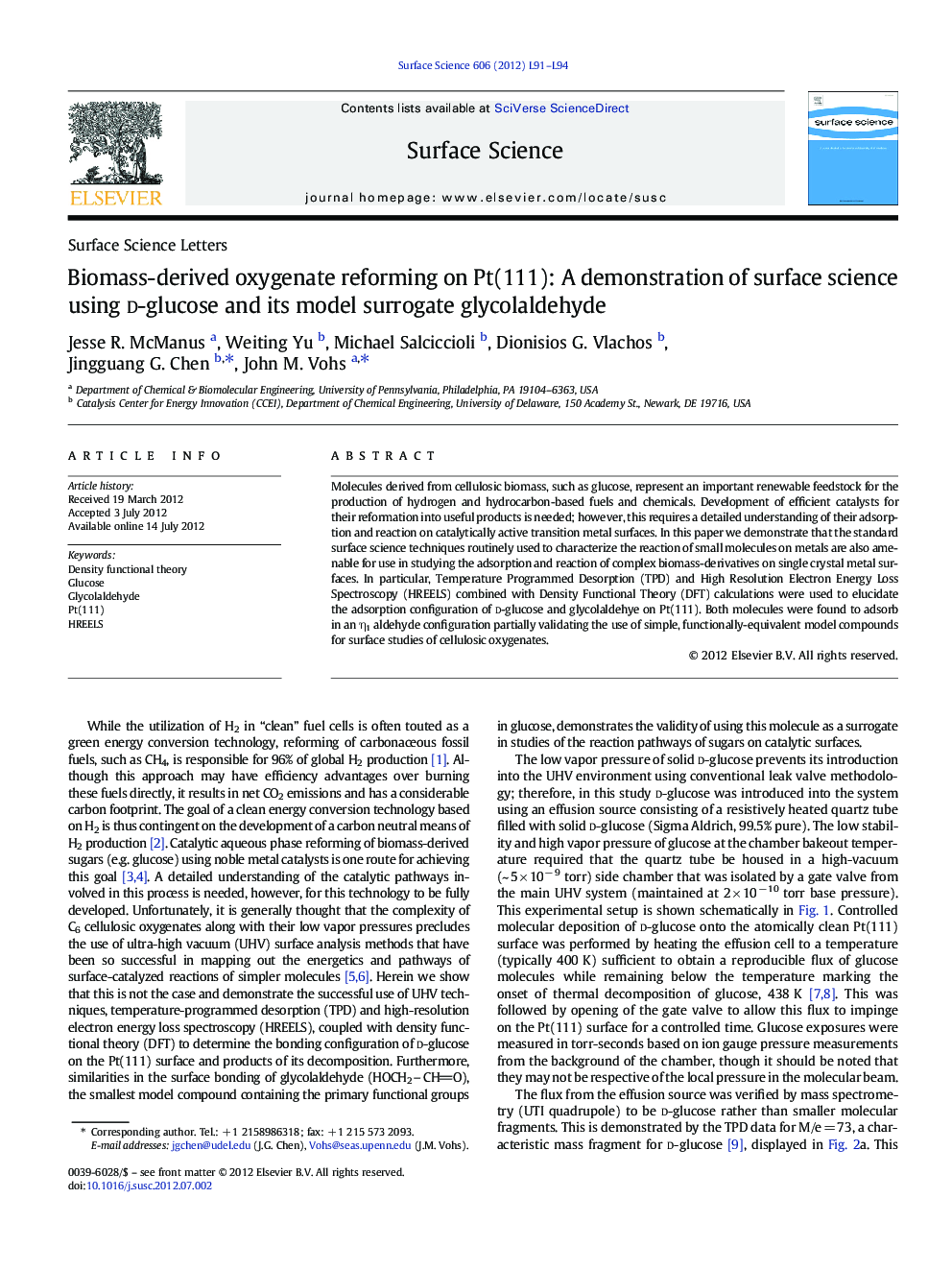| Article ID | Journal | Published Year | Pages | File Type |
|---|---|---|---|---|
| 5422665 | Surface Science | 2012 | 4 Pages |
Abstract
Molecules derived from cellulosic biomass, such as glucose, represent an important renewable feedstock for the production of hydrogen and hydrocarbon-based fuels and chemicals. Development of efficient catalysts for their reformation into useful products is needed; however, this requires a detailed understanding of their adsorption and reaction on catalytically active transition metal surfaces. In this paper we demonstrate that the standard surface science techniques routinely used to characterize the reaction of small molecules on metals are also amenable for use in studying the adsorption and reaction of complex biomass-derivatives on single crystal metal surfaces. In particular, Temperature Programmed Desorption (TPD) and High Resolution Electron Energy Loss Spectroscopy (HREELS) combined with Density Functional Theory (DFT) calculations were used to elucidate the adsorption configuration of d-glucose and glycolaldehye on Pt(111). Both molecules were found to adsorb in an η1 aldehyde configuration partially validating the use of simple, functionally-equivalent model compounds for surface studies of cellulosic oxygenates.
Related Topics
Physical Sciences and Engineering
Chemistry
Physical and Theoretical Chemistry
Authors
Jesse R. McManus, Weiting Yu, Michael Salciccioli, Dionisios G. Vlachos, Jingguang G. Chen, John M. Vohs,
